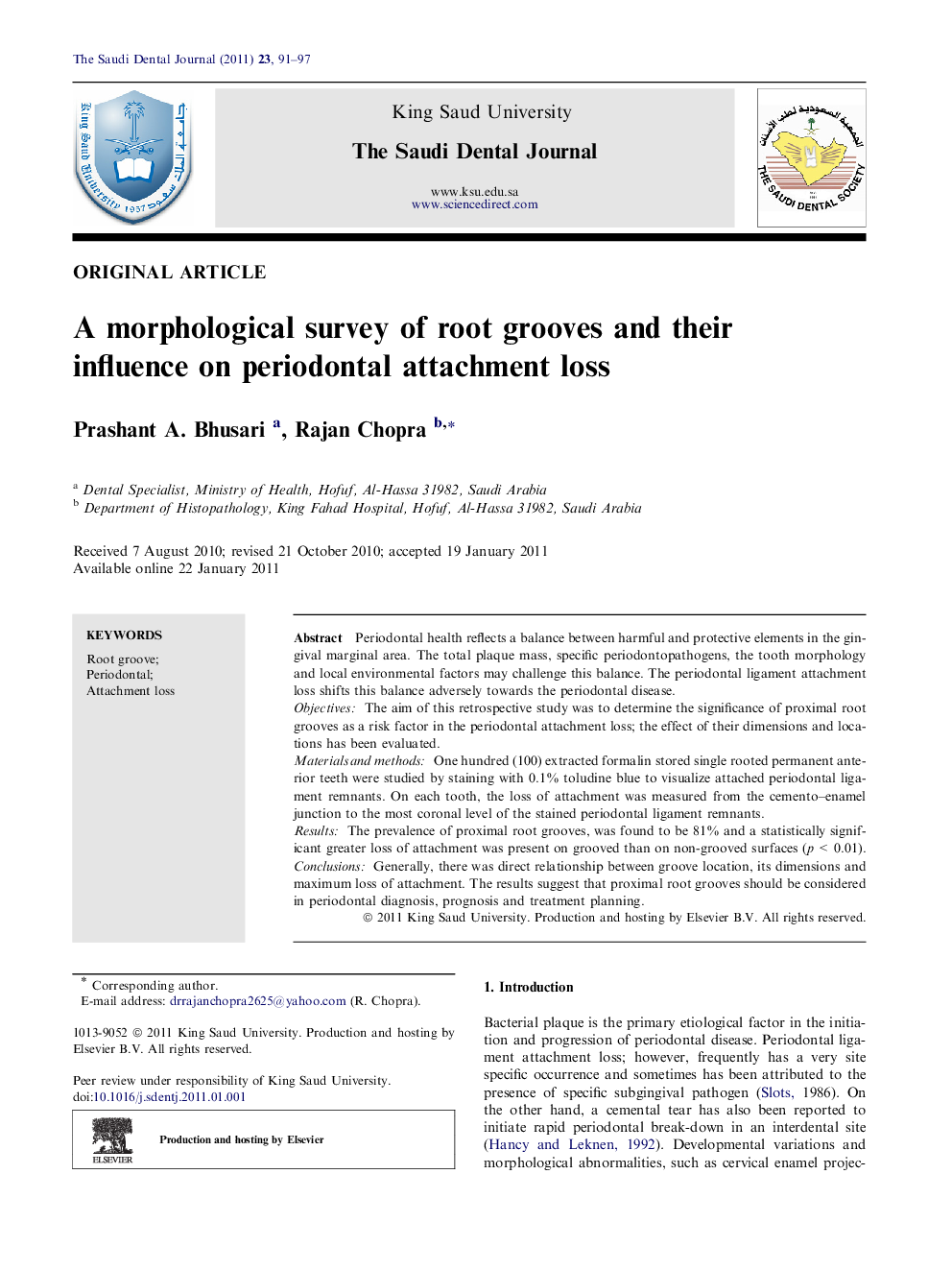| Article ID | Journal | Published Year | Pages | File Type |
|---|---|---|---|---|
| 2686308 | The Saudi Dental Journal | 2011 | 7 Pages |
Periodontal health reflects a balance between harmful and protective elements in the gingival marginal area. The total plaque mass, specific periodontopathogens, the tooth morphology, and local environmental factors may challenge this balance. The periodontal ligament attachment loss shifts this balance adversely toward the periodontal disease.ObjectivesThe aim of this retrospective study was to determine the significance of proximal root grooves as a risk factor in the periodontal attachment loss; the effect of their dimensions and locations has been evaluated.Materials and methodsOne hundred (100) extracted formalin stored single rooted permanent anterior teeth were studied by staining with 0.1% toludine blue to visualize attached periodontal ligament remnants. On each tooth, the loss of attachment was measured from the cemento–enamel junction to the most coronal level of the stained periodontal ligament remnants.ResultsThe prevalence of proximal root grooves was found to be 81% and a statistically significant greater loss of attachment was present on grooved than on non-grooved surfaces (p < 0.01).ConclusionsGenerally, there was direct relationship between groove location, its dimensions, and maximum loss of attachment. The results suggest that proximal root grooves should be considered in periodontal diagnosis, prognosis, and treatment planning.
